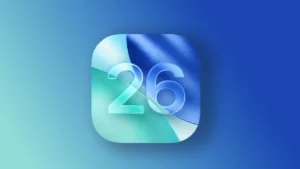After updating your iPhone to iOS 26, you may find that your HomePod 2nd Gen no longer works as expected, particularly when using AirPlay. A common issue, as described by users in this Apple Community discussion, is being unable to stream audio from an iPhone to the HomePod, even while other devices like an iPad or Mac can still connect without issue. This problem typically points to a software communication breakdown between the newly updated iPhone and the HomePod, often caused by a software bug or a network configuration glitch.
In this article:
ToggleWhy Your HomePod Isn’t Working Properly
Your HomePod relies on a stable and consistent Wi-Fi network to communicate with your iPhone via Apple’s AirPlay protocol. When you update your iPhone’s operating system, it can sometimes corrupt network settings or introduce bugs that disrupt this communication. The issue is rarely with the HomePod itself, but rather with how the iPhone discovers and connects to it on your network after the update. This explains why other devices that haven’t undergone the same specific OS change can still connect, while your iPhone cannot.
How to Fix Your HomePod After an iOS 26 Update
Before starting, ensure your HomePod is plugged in and that your iPhone is nearby. These solutions are ordered from simplest to most involved.
1. Restart Your Devices and Router
The most effective first step for resolving network communication issues is to restart all involved components. This clears temporary memory and forces devices to establish fresh connections.
- Restart your HomePod: Unplug it from the power outlet, wait 30 seconds, and plug it back in.
- Restart your iPhone: Press and hold the side button and one of the volume buttons until the power-off slider appears. Drag the slider to turn it off. Wait 30 seconds, then press and hold the side button to turn it back on.
- Restart your Wi-Fi router: Unplug your router from power, wait 30 seconds, and plug it back in. Allow a few minutes for it to fully boot up and for your devices to reconnect.
2. Verify Your Network Connection
AirPlay requires that both your iPhone and HomePod are connected to the exact same Wi-Fi network.
- On your iPhone, go to Settings > Wi-Fi and note the name of the connected network.

- Open the Home app, press and hold the tile for your HomePod, then scroll down to see its network details and ensure it matches your iPhone’s network.
- If you are using a VPN on your iPhone, disable it temporarily, as it can interfere with local network discovery.
3. Update Your HomePod’s Software
Just as your iPhone receives updates, so does your HomePod. A mismatch in software versions can cause compatibility issues.
- On your iPhone, open the Home app.
- Tap the More (…) button in the top-right corner and select Home Settings.
- Tap Software Update and install any available updates for your HomePod.
4. Reset Network Settings on Your iPhone
This step specifically targets network-related corruption on your iPhone that may have occurred during the iOS 26 update. It will not delete any of your personal data, but it will erase saved Wi-Fi passwords and other network configurations.
- Go to Settings > General > Transfer or Reset iPhone.
- Tap Reset > Reset Network Settings.

- Your iPhone will restart. You will need to reconnect to your Wi-Fi network afterward.
5. Reset Your HomePod
If the connection issue persists, resetting your HomePod to its factory settings and setting it up again will resolve any deep-seated software glitches on the device itself.
- Open the Home app on your iPhone.
- Press and hold the tile for your HomePod.
- Scroll to the bottom and tap the Settings gear icon.
- Scroll down and select Reset HomePod…, then choose Remove Accessory.
- Once removed, bring your unlocked iPhone near the HomePod and follow the on-screen prompts to set it up again.
If none of these solutions work, contact Apple Support.


